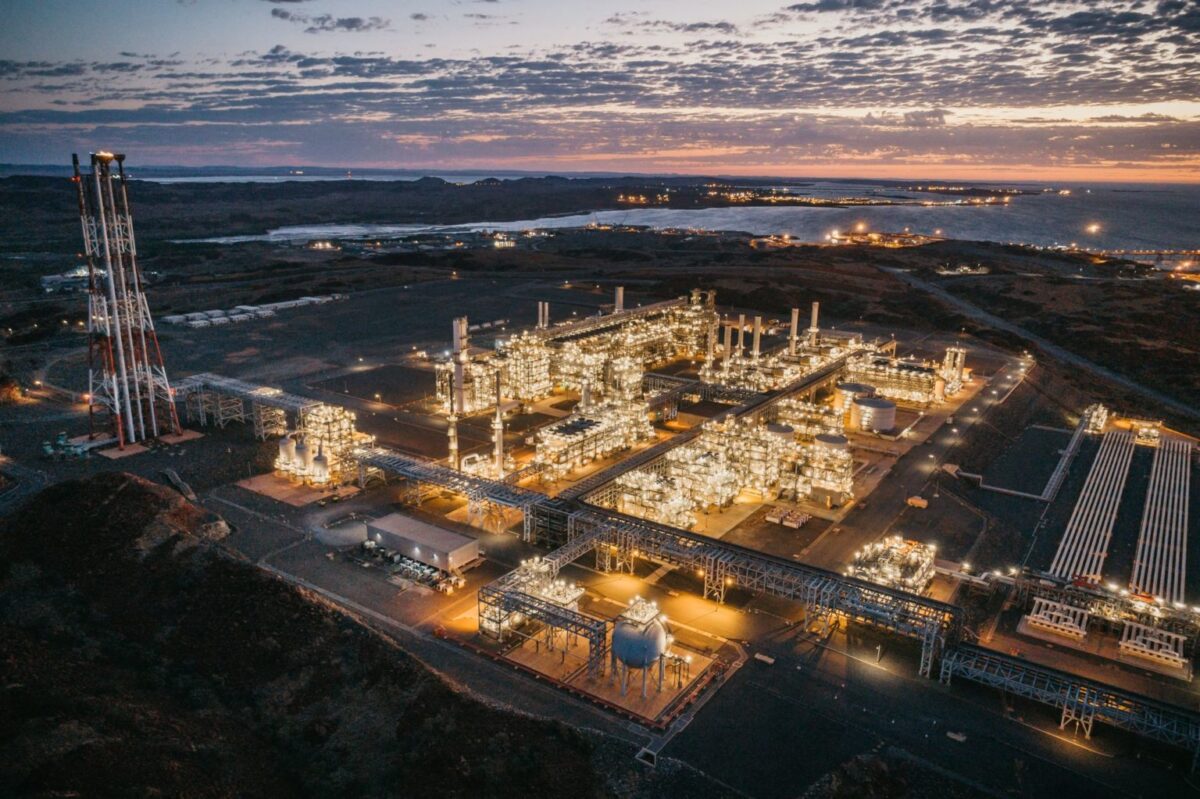Western Australia’s Regional Joint Development Assessment Panel has given planning approval for a 500 MW solar farm that Perth-based Woodside Energy wants to build near Karratha, in the northwestern part of the state.
The AUD 300 million ($196 million) project involves an initial 100 MW PV facility that could be expanded in stages up to 500 MW. Woodside has also outlined plans to include up to 2,000 MWh of battery energy storage – although this development approval is limited to the solar farm component only.
The company said the Woodside Power Project will see a solar facility and big battery built on a 975-hectare site in the Maitland Strategic Industrial Area, approximately 15 kilometers southwest of Karratha.
Woodside said the project will supply renewable energy for use by industrial customers on the Burrup Peninsula, including its own Pluto liquid natural gas (LNG) export facility.
All transmission of power from the solar facility would be delivered via the North West Interconnected System (NWIS), through existing or new infrastructure owned by regional utility Horizon Power.
Woodside Chief Executive Officer Meg O’Neill has previously said the company is looking to capitalise on the region’s “world-class renewable energy resources” and the willingness of industry, government and other key stakeholders to co-operate on new energy opportunities.
“Woodside’s vision is for large-scale supply of renewable energy to existing and future industry on the Burrup Peninsula,” she said. “We are lucky to have access to abundant natural resources, safe and reliable energy operations and both industry and government that are motivated to drive sustainable energy outcomes.”
The planning approval for the solar farm comes just days after Woodside joined other global players in signing the oil and gas decarbonisation charter at the COP28 summit being held in the United Arab Emirates.
The charter, aimed at accelerating methane emissions reduction, includes major industry players like BP, Shell, TotalEnergies and ExxonMobil, among its 50 signatories.
Under the charter, signatories have agreed to end routine flaring and “near-zero upstream methane emissions” by 2030.
O’Neill said the charter reinforces Woodside’s existing commitments to reducing carbon and methane emissions and to investing in the products and services customers need as they do the same.
“The signatories have also agreed to work towards industry best practices and key actions in a number of areas,” she said. “[These include] emissions reduction, investing in renewables and low-carbon fuels, and improved transparency through enhanced measurement, reporting and verification of greenhouse gas emissions.”
Woodside has committed to reducing its carbon emission by 30% by 2030 and plans to achieve net zero by 2050 or sooner and has previously outlined plans to target investments of more than AUD 7 billion in emerging new energy this decade.
That however compares with its planned spend on large-scale oil and gas projects, including its Scarborough gas field project off the coast of Western Australia.
With a price tag of AUD 16.5 billion, the project will involve the construction of a 430-kilometre pipeline, linking the Scarborough gas field to the mainland, as well as a second production train at the Pluto LNG processing plant.
This content is protected by copyright and may not be reused. If you want to cooperate with us and would like to reuse some of our content, please contact: editors@pv-magazine.com.




By submitting this form you agree to pv magazine using your data for the purposes of publishing your comment.
Your personal data will only be disclosed or otherwise transmitted to third parties for the purposes of spam filtering or if this is necessary for technical maintenance of the website. Any other transfer to third parties will not take place unless this is justified on the basis of applicable data protection regulations or if pv magazine is legally obliged to do so.
You may revoke this consent at any time with effect for the future, in which case your personal data will be deleted immediately. Otherwise, your data will be deleted if pv magazine has processed your request or the purpose of data storage is fulfilled.
Further information on data privacy can be found in our Data Protection Policy.